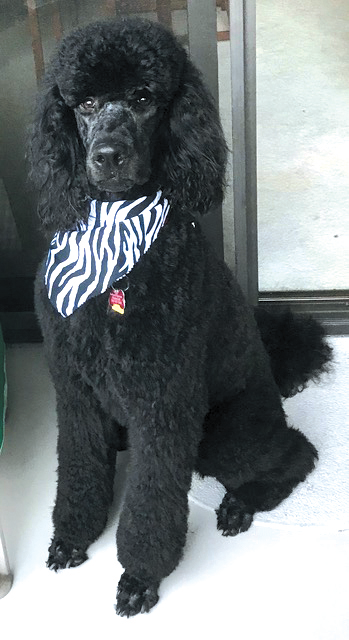Thin rubber gloves, the plastic bag the newspaper is delivered in, a piece of fabric, the rubber gasket on a Yeti drink holder…. These are just some of the non-food items that standard poodle Butch has eaten and subsequently had to have removed from his stomach or intestines, reports Your Dog reader Barbara Freeman of Los Angeles. She has been told there’s no treatment for pica — the eating of non-food items. But that’s not true.
Getting to the bottom of pica
Some people think dogs eat non-food substances to correct nutritional deficiencies, but with rare exceptions, nutrition isn’t the issue. They chew and eat non-food items because they’re dogs. Chewing is normal canine behavior, whether it’s chewing food, a sock, or a piece of paper. It can be dangerous, of course, but it does not mean the animal is lacking vitamin or minerals.
That said, pica can indicate that something is wrong in a dog’s gastrointestinal tract. “Just the way dogs might eat grass, leaves, or sticks when they don’t feel well, eating other non-food items may be a way a dog tries to relieve stomach discomfort,” says Tufts animal behaviorist Stephanie Borns-Weil, DVM. That’s why, she says, a dog with relentless pica, like Butch, should have a medical exam with a full panel of blood work and a rule-out of any metabolic conditions that could keep him feeling hungry all the time. An endoscopy might also be in order to make sure he doesn’t have a condition in his GI tract such as a stomach ulcer. A general practitioner or a veterinary internal medicine specialist can orchestrate this series of tests. If something is found to be amiss, appropriate treatment can take care of it — and, hopefully, cure the pica in the process.
When the pica is not medical but behavioral
If it turns out the pica does not stem from a medical condition but is behavioral in nature (sometimes what starts out as a medical issue becomes a behavior pattern), a multi-pronged approach should be put in place.
- Keep your home as free of potential eating targets as you possibly can, putting any non-food item the dog might eat out of range.
- Teach your dog an alternate behavior to chewing on non-food items, such as looking at you rather than chomping down in return for a delectable treat. Admittedly, it’s a process that happens over time, and you may need an animal behaviorist to help you train your dog. But it can and does work.
- If you work with a veterinary behaviorist, you may learn that your dog’s pica is particularly entrenched because he has insufficient stimulation, anxiety, or a combination of the two. If there’s not enough to do or if he is a nervous sort, he may chew non-food items to keep himself occupied, or calm. “It’s like going to the refrigerator for food when you’re not hungry but feeling bored or stressed,” Dr. Borns-Weil says. The solution consists of more activities, including activities with you, and perhaps help in soothing an anxious mind. Depending on how deep-rooted the problem is, the doctor may consider introducing an SSRI (serotonin re-uptake inhibitor) such as Prozac (fluoxetine) to relieve your dog’s anxiety and curb the impulse to chew or eat things.
- While you are retraining your dog, keep an OutFox Field Guard on him when he’s outside. It’s a mesh screen/bag that fits over your dog’s head and is lighter, more comfortable, and less restrictive than a basket muzzle. It will keep him from being able to eat but will allow him to breathe comfortably. He can even drink with it on. (outfoxfordogs.com.)
Re-training a dog whose pica is getting the better of him is a long haul and a lot of work, Dr. Borns-Weil says. But in most cases, it does succeed in helping a dog learn not to chew on non-food items that can be both dangerous for him and costly for you to have removed from his GI tract. Even for dogs that make substantial progress, though, careful management will always be needed to reduce the dog’s access to objects he may want to eat.





